GTM 3.0 = Humans + Agents + Multi-Agent Workflows
GTM AI leaders are rewriting GTM playbooks: AI-native go-to-market engine
Dear GTM Strategist,
Are you as sick and tired of clickbaits “I vibe-coded LinkedIn this weekend” and “this n8n + Google calendar + Google sheet integration will be your 50K/year personal assistant”? 🤠
I spend my weekends vibecoding and exploring new automation use cases, too. There are lots of cool stuff YouTube tutorials out there - you don't need me to screen share Make or n8n to you.
However, when it comes to adoption by larger businesses, our vibe coding creations are more likely to be perceived as security vulnerabilities than business-transformers, at least for now.
I was curious how organizations serving large companies with compliance, security, and other “adult businesses” constraints integrate agentic marketing and sales into their workflows.
And I did not have to search far. My colleague Jonathan Kvarfordt, head of GTM growth at Momentum, kindly shared some use cases. While Big 4 reports are painting the picture that 78% of businesses will be automated by the end of 2025 (great 🪝), based on Momentum’s research, only 8% of businesses feel really confident about their AI adoption.
It is OK not to be OK, and we all feel like our competitors are further ahead. FOMO is real.
By no means does that mean that we should ignore the progress in agentic marketing and sales, AI GTM, GTM engineering? - However you wanna call it, my friend :)
Let’s see how Jonathan builds next-generation multi-agent systems, where human talent and AI agents collaborate in a tightly orchestrated structure. ✌️
Here’s what you’ll learn:
The new GTM team structure: Humans + AI Agents + Orchestration
The role of humans in the AI-assisted workflow
Momentum’s internal and customer-facing AI agent stack
A detailed walkthrough of the AI Sales Coaching Agent
How Prompt Engineering Became the Foundation for Momentum’s GTM System
You can tell a lot about a person from their prompting style.
“Prompting AI is a lot like training a human. You’re guiding it to execute a behavior, to think in systems, to get the job done,” is what Jonathan practices.
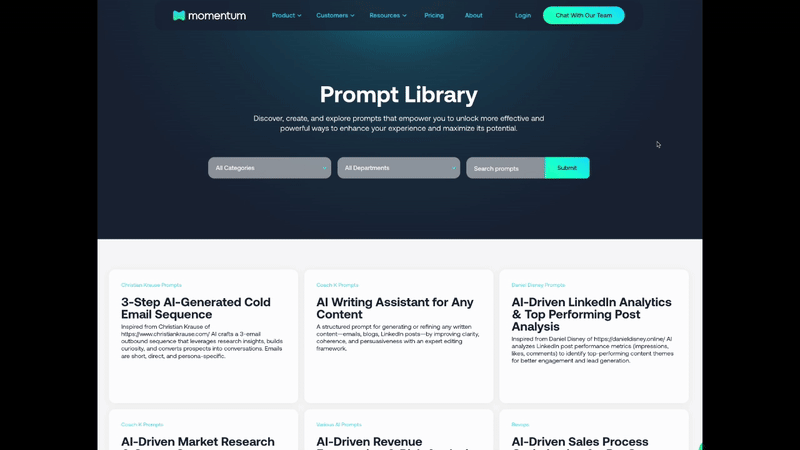
Jonathan’s prompting style is structured, role-specific, and optimized for execution - exactly the type of thinking required to design functional AI agent workflows. His early experience came not from playing with chatbots but from enabling teams at Fortune 500 companies and from being in startup land, helping with onboarding teams, creating GTM foundations, and enabling customers on custom AI models built in-house.
That grounding gave him a systems-level understanding of how intelligence - human or artificial - needs to be trained, not just queried. When ChatGPT launched, Jonathan applied that foundation to GTM and built the GTM AI Academy within weeks. Since then, he’s trained thousands in how to use AI not just as a writing tool, but as a collaborator embedded in go-to-market systems.
Interestingly, Jonathan didn’t join Momentum as an executive - he started as a client. What impressed him?
“I had a demo with the CEO, and I immediately knew it was different. I’d been looking for something like this for my own workflows. Two years ago, when AI first came out, seeing the combination of deep automation and integration into my CRM was amazing, and I knew we needed what they had. At the time, my team spoke Spanish and Portuguese with customers but had to enter notes into Salesforce in English. Momentum automated all of it and it blew my mind when I could start to “coach” the team using the Momentum Slack Agent asking for “coaching notes.” After that, I kept asking for new things. They actually built some of them.
What first impressed me was the CEO, founders and team. He did not pitch me like everyone else did, nor did he have visions of his tech solving every issue I had, he showed me the possibility in 2023 of what could be done when you combine AI with automation, it blew me away.”
Curiosity led to product feedback, which in turn led to an advisory role, and ultimately to a full-time position as Head of Growth. In the past year alone, Momentum has run its Series A, grown by 400%, been mentioned at SaaSTR, 20VC podcast, crossed 10,000 LinkedIn followers, and got over 10,000 email subscribers... - They went from “What is Momentum?” to “Wait, I’ve heard about them.”
Next, meet the GTM team behind these great traction stats.
Momentum GTM Team Structure: Pods + Digital Workforce + Orchestration Layer
Sometimes when Jonathan and I talk, I imagine that he has 100 people working on his GTM team, given their consistent massive output. They have released 10+ in-depth white papers and reports, released the 200+ prompt library, redone the website, upgraded the brand, and pumped out over 100 pieces of marketing as well as enablement. But in reality, Momentum’s Growth team is structured around distributed, role-specialized pods:
“This structure allows for asynchronous execution, efficient handoffs, and specialization - critical for running campaigns, content, and enablement initiatives,” explains Jonathan.
What makes Momentum’s system unique isn’t just the pod structure - it’s how human roles are augmented with a layered system of AI agents.
Momentum runs 2 core types of agents:
Prompted agents: Triggered by humans. For example, after a sales call, an agent extracts pain points, pushes them into Slack, and tags them for content creation.
Autonomous agents: Run end-to-end workflows without human input. One monitors competitor mentions, posts to Slack, triggers a Zap via Zapier, and updates internal battle cards in Notion.
Here’s how the AI integration layers work:
Workflow augmentation: Repetitive, rule-based processes (like battle card updates or call summarization) are fully automated.
Signal routing: Agents monitor Slack, Notion, and CRM inputs to push signals (e.g. objections, trends) to the right team.
Enablement overlay: Agents flag calls or reps that show patterns linked to higher or lower performance—and push insights directly to managers.
The orchestration stack includes tools like Zapier (for no-code automation), MindStudio (for lightweight flows), Notion + Slack (as integration surfaces), and of course, Momentum’s own revenue orchestration platform.
HubSpot for Startups just published a free, non-gated report on how AI is reshaping startup go‑to‑market strategies in 2025.
The report reveals:
→ 46% of venture‑backed startups now dedicate over 25% of their GTM stack to AI
→ 69% of startups already have a dedicated AI specialist or team
→ Those with AI teams are 14% more likely to hit $20M–$50M ARR
→ Some are scaling to $60M ARR with just 30 employees
→ 37% lowered CAC and 72% improved upsell rates with AI
…and much more.
Dive into how AI is redefining GTM for startups - and what investors now expect to see.
Momentum’s Internal Agent Stack: Meet 8 GTM AI Agents
The opportunity that AI agents and multi-agent systems bring to GTM organizations is far beyond “speed and automation”. Best-in-class GTM teams structure agentic workflows and multi-agent collaborations to create more value than traditional workflows.
“Rethinking workflows means asking which parts should even exist. Don’t ask how to automate a handoff. Start by clarifying your workflows and roles. Use the Jobs to be Done framework to rethink the blueprint. Then assign agents where they create leverage,” says Jonathan Kvarfordt.
He sees the GTM industry moving from tool-based experimentation toward system-level design. The old approach was to test the tools' integrations. The new direction is to ask:
How do AI agents collaborate with each other?
Where do humans add the most leverage in this system?
What is the information architecture that connects it all?
Jonathan frames this as a maturity curve:
Experimentation (tools, plugins, one-off hacks)
Adoption (automating tasks, building prompt libraries)
Integration (multi-agent workflows and process rearchitecture)
Momentum’s Internal AI Agent Stack
Jonathan is a self-described “AI Nerd” and leverages several AI Agent platforms, with the foundation being Momentum’s AI Revenue orchestration technology. Jonathan mostly uses Mindstudio, Empler AI, Relevance AI, Make, Zapier, Lindy, Gumloop, and N8N.
He was very clear to say that you DO NOT have to use all of these to get good results. Jonathan just loves to test out tech to find the best result, but you can do A LOT with one platform, his suggestion was to start with a Mindstudio or Zapier, which are beginner-friendly, and then move to more advanced systems like n8n, Empler, Make, Relevance, etc.
1. Competitor Monitoring Agent
Purpose: Detects competitor mentions
Workflow: Mention detected → Slack update → Zapier trigger → Notion battle card updated
Value: Keeps battle cards fresh with zero human input
2. Customer Signal Routing Agent
Purpose: Extracts pain points and key questions from calls
Workflow: Transcripts → Key insights pushed to Slack → Content tagged
Value: Reduces manual note review and accelerates insight capture
3. Enablement Content Trigger Agent
Purpose: Translates signals into content/enablement actions
Workflow: Slack thread → Summary and classification → Campaign or content brief generated
Value: Connects frontline insights to GTM execution
4. Sales Call Pattern Scoring Agent
Purpose: Scores rep behavior based on defined competencies
Workflow: Call audio → Transcript → Pattern detection → Coaching suggestion
Value: Feeds into Sales Coaching Agent for scalable enablement
5. Content Routing Agent
Purpose: Classifies and routes incoming GTM signals
Workflow: Tags Slack data → Pushes task to content backlog
Value: Improves speed and precision of GTM response
6. Campaign Brief Agent (partially active)
Purpose: Converts product inputs into marketing briefs
Workflow: Internal doc → AI-generated brief → Human QA
Value: Speeds GTM campaign readiness
7. Internal Training & Onboarding Agent
Purpose: Assists internal teams with prompting, messaging, and GTM playbooks
Workflow: Prompts generate starter materials, cheat sheets, or scripts
Value: Reduces dependency on senior team for onboarding
8. Experiment Tracker Agent
Purpose: Monitors GTM experiments and flags underperformers
Workflow: Performance data → Outcome tagged → Slack notification
Value: Prevents wasted cycles and guides optimization
The role of humans in the AI-assisted workflow
There’s one thing Jonathan is crystal clear about: human sellers matter in this process, now more than ever. No matter how sophisticated the tech stack becomes, human-assisted deals convert faster, close larger, and retain customers longer.
What will not change is that people still buy from people. But what can change - and is already changing - is where we place those people and how we train them to have the most impact.
Jonathan explained: “Good sales is really just a good buying experience. And good buying experiences are now becoming both preparing smart, situationally aware reps and using AI to assist in the buying process with tech such as 1mind.com or with getpeel.ai where you have conversational AI that can talk someone through a part of the buying process that used to be relying on a human. But AI can help us identify exactly where human contact matters—and how to make it count.”
That philosophy is the backbone of Momentum’s AI Agents that become the foundation of all the automations or use cases. Everything signals off of structured first-party data that Momentum specializes in.
Momentum’s Customer-Facing AI Agents
Deal Execution Agent
Purpose: Eliminates manual data entry
What it does: Writes to Salesforce fields, saves notes, and handles CRM hygiene automatically
Value: Saves hours of rep time every week and ensures data consistency
Customer Retention Agent
Purpose: Reduces churn through proactive insights
What it does: Captures customer sentiment, flags churn signals, and collects feedback
Value: Gives CS teams early warning and coaching signals to intervene before it's too late
Coaching Agent
Purpose: Scales sales coaching based on real behavior
What it does: Scores rep calls, surfaces patterns, and shares top-performer clips
Value: Automates coaching at scale and develops reps faster
AI CRO (Chief Revenue Officer)
Purpose: Supports strategic decisions across the revenue org
What it does: Surfaces executive-level insights across pipeline, team performance, and account status
Value: Helps leadership prioritize coaching, coverage, and pipeline decisions with live data
Integrations Layer
Purpose: Makes agents interoperable with existing GTM systems
What it does: Connects to Salesforce, Slack, Notion, and more
Value: Streamlines orchestration without adding another dashboard
Since we have already dived into the data layer with Jonathan before, I wanted to know how exactly their coaching agent works and if I can implement some of the principles behind it in my daily work.
Here’s how Momentum’s AI Sales Coaching agent works:
A company sets up an objective and metrics relevant to the sales process
A company can do the setup based using their own sales methodology (no cookie-cutter models)
The agent parses sales call transcripts and scores them against behavioral competencies like objection handling, listening ratio, and discovery depth.
The system looks for repeatable behaviors that correlate with key metrics like win rate, ACV, and sales cycle length and uses them for interactive coaching.
Reps aren’t just given scores—they’re shown call clips where top performers excel in the same areas.
A few concrete examples:
A rep struggling with objection handling gets shown clips from a peer who consistently closes large deals by reframing budget pushback.
A rep with strong energy but poor control over talk time is flagged, and a coaching module surfaces best practices for pacing and question stacking.
Calls with missed opportunities are annotated and routed to managers for forward-looking coaching - not just review.
The result?
Coaching becomes evidence-based and scalable (no more 300+ hours of listening to sales calls 🤠)
Enablement teams spend less time on gut-feel reviews and more time on what actually moves deals.
Reps grow faster, with clearer models of success.
Cool. Hope you enjoyed this one.
To be painfully honest - every time I read those awesome examples of how companies are excelling with using agents in their GTM processes, I’ll enthusiastically share the link on our Slack “guys, I think we should do that” - and more often than not - no one will be like “hell yes, let’s do it - here is the first build” - I’ll have to push it further, do v01 of at least some spec.
So here is the best advice I can give you - action is the only thing in business that changes outcomes. Here are the next best steps:
Stage 1: Still stuck on prompting/how to use mainstream AI tools? Download the list of prompts or join the GTM AI academy and get further ahead before summer is over.
Stage 2: Start playing around with agents: Map the workflow you’d like to automate, use mainstream builders such as n8n, Zapier, MindStudio, whatever seems manageable to you, watch a couple of YouTube tutorials, and start building.
And definitely give my friend Jonathan a follow on LinkedIn and subscribe to his GTM AI newsletter. I wouldn't say that’s a light read, but it's one of the most relevant free resources in the GTM AI space that you can understand, even if you're not super technical.
📘 New to GTM? Learn fundamentals. Get my best-selling GTM Strategist book that helped 9,500+ companies to go to market with confidence - frameworks and online course included.
✅ Need ready-to-use GTM assets and AI prompts? Get the 100-Step GTM Checklist with proven website templates, sales decks, landing pages, outbound sequences, LinkedIn post frameworks, email sequences, and 20+ workshops you can immediately run with your team.
🏅 Are you in charge of GTM and responsible for leading others? Grab the GTM Masterclass (6 hours of training, end-to-end GTM explained on examples, guided workshops) to get your team up and running in no time.
🤝 Want to work together? ⏩ Check out the options and let me know how we can join forces.




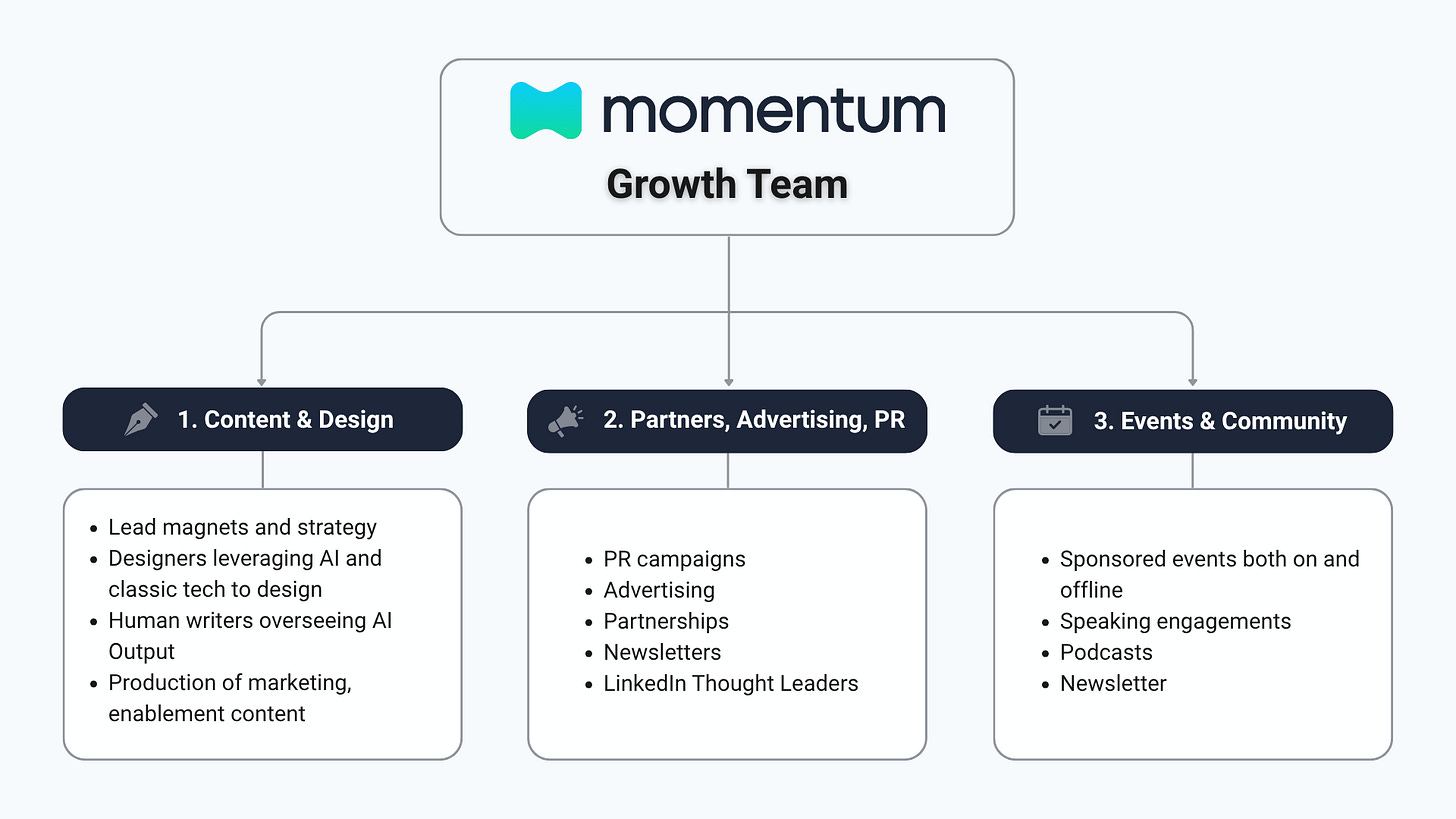

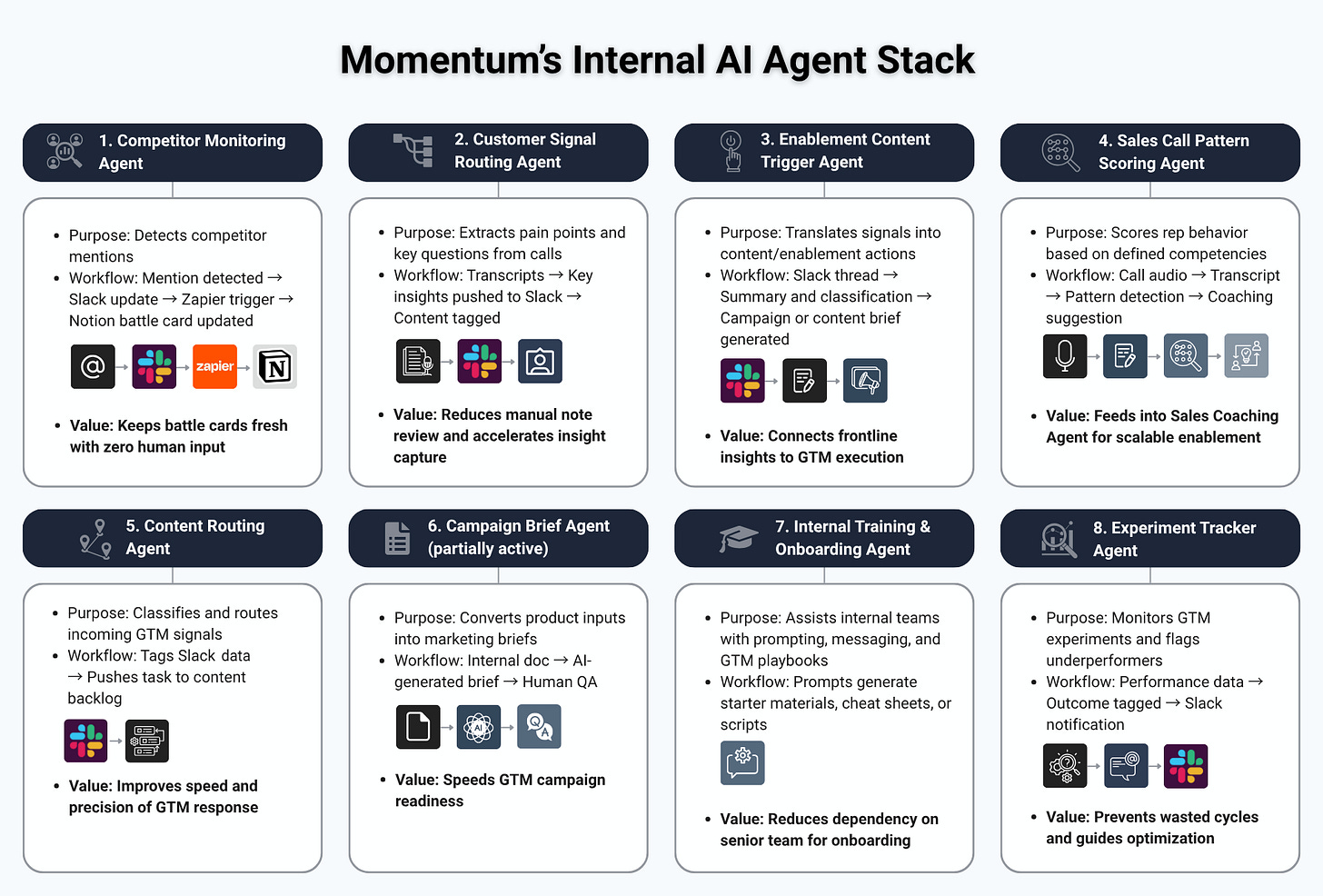
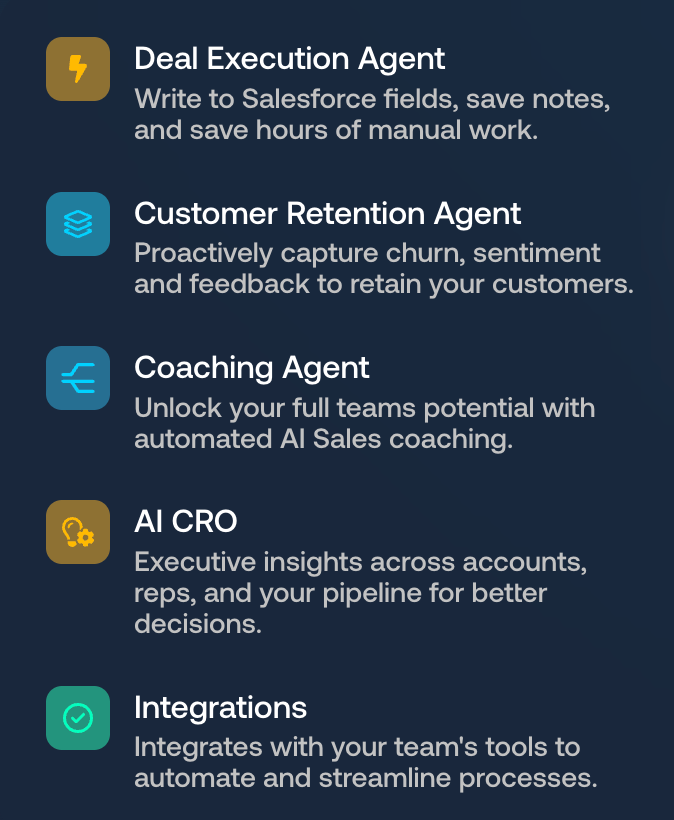
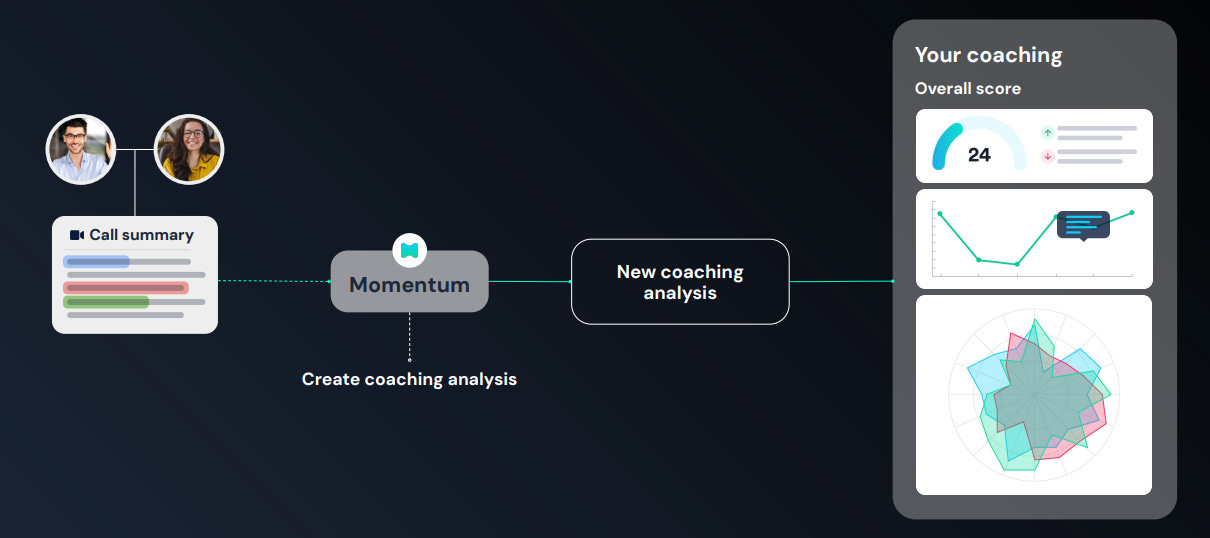


Thank you for having me Maja! You did an amazing job as always on our convo, love working with you.
Love the breakdown. Might be silly but what's the nuance between a workflow and an agent? Some of the agents above seem like very powerful workflows but I'm sure I'm missing something obvious 😅